10 Low Maintenance Evergreen Climbing Plants: Best Climber for Your Fence
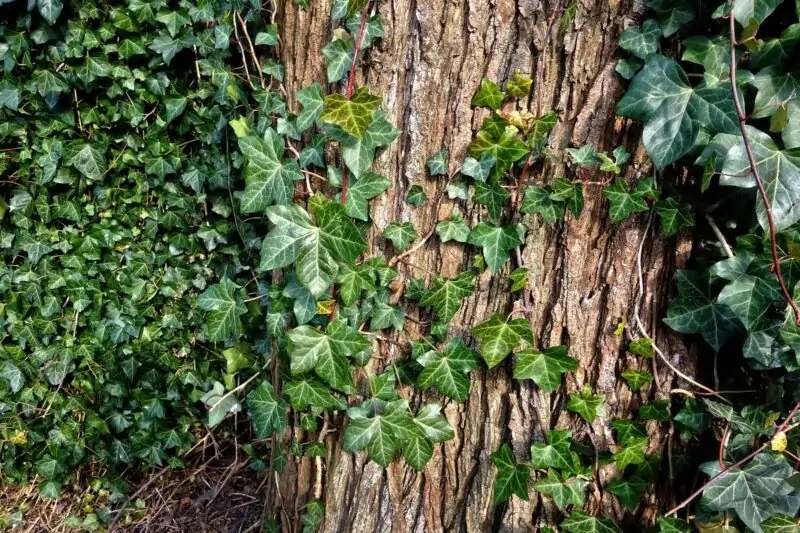
Warning: Undefined property: stdClass::$error in /sites/makeoveridea.com/wp-content/themes/theissue/inc/misc.php on line 71
Warning: Undefined property: stdClass::$error in /sites/makeoveridea.com/wp-content/themes/theissue/inc/misc.php on line 71
Warning: Undefined property: stdClass::$error in /sites/makeoveridea.com/wp-content/themes/theissue/inc/misc.php on line 71
Are you looking for a way to add some greenery and life to your outdoor space without the hassle of constant maintenance? Look no further than low maintenance evergreen climbing plants! These versatile climbers not only provide year-round greenery but also shade, privacy, and even fragrance. In this article, we’ll explore how to select the best evergreen climbers that are easy to grow and keep their leaves in winter. We will also highlight some of the best varieties on offer which have beautiful flowers in summer and keep flowers in late winter.
Selecting the Perfect Low Maintenance Evergreen Climber
Selecting an ideal evergreen climber requires careful consideration of several factors that can have varying degrees of importance depending on where you live. Understanding these key considerations will help ensure that your chosen plant thrives in its new environment.
Types of Evergreen Climbers
Evergreens are known for their lush foliage, which remains throughout all seasons. There is a range of varieties available, including Ivy (Hedera helix), Honeysuckle (Lonicera spp.), Clematis (Clematis spp.), Star Jasmine (Trachelospermum jasminoides), and Euonymus Fortunei.
Factors To Consider When Choosing An Evergreen Climbing Plant:
Climate Conditions
Different species require different climate conditions, so it’s important first to consider whether or not they can thrive in local temperatures. Cold hardiness varies from one species to another, with many requiring specific temperature ranges below freezing point, while others grow within warm climates such as those found around equatorial regions.
Soil Type
When selecting an appropriate soil type, one must take into account both nutrient content levels present within individual soils along with moisture-holding capacity factors such as acidity level present over time/seasons, etc.
Space Available
With limited real estate when planting climbers, taking care of placement is important because, once established, growth patterns will emerge, showing what height/width limitations exist alongside other landscape features like trees, buildings, fences, walkways, etc. Ensuring proper spacing initially will discourage any future damage to these features.
Benefits of Low Maintenance Evergreen Climbing Plants
Climbers are among the most popular choices for gardeners looking to add some greenery and life to their outdoor space. Not only do they provide year-round greenery, but also shade, privacy, fragrance, and attract pollinators such as bees that can help your garden flourish.
Year-Round Greenery
Evergreens provide stunning foliage all year round, which is why they make perfect climbers! These plants stay lush throughout both summer heatwaves and winter frost, making them a great choice if you’re looking for low maintenance options in particular.
Shade and Privacy
Apart from aesthetic reasons, evergreen climbers serve multiple functional purposes like providing necessary shade and complete privacy when planted near walls, fences, etc. Just imagine how nice it would be enjoying a cool breeze with family members while watching the sunset behind shaded trellises or spending evenings with friends without any disturbance from neighbors due to dense coverage by climbing hydrangeas?
Fragrance And Pollinators
Fragrant evergreen climbers just cannot go unnoticed because their scent alone draws people closer. Whether it’s Japanese honeysuckle (Lonicera japonica) or star jasmine (Trachelospermum jasminoides), planting either one close by is a sure way to bring a sweet aroma into the air around the house, attracting many buzzing pollinator insects like butterflies, hummingbirds, and honeybees. This boosts ecological diversity, which helps ensure a healthy environment even more.
Top Low Maintenance Evergreen Climbing Plants
Now that we know the factors to consider when choosing evergreen climbers, let’s dive into the top options available in the market.
Ivy (Hedera helix)
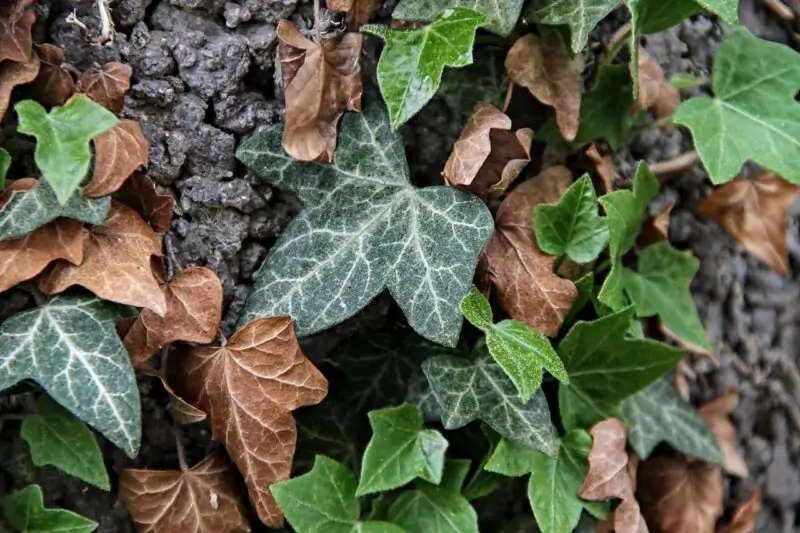
Ivy is a popular choice for those looking for an easy-to-grow evergreen climbing plant. It can grow up to 80 feet long and spreads quickly across any surface it climbs on, including walls and fences. Its green leaves are not only beautiful but also offer great coverage – perfect if you’re looking for some much-needed privacy or shade.
Ivy prefers partial sun exposure with well-draining soil; however, it grows well in various conditions.
Honeysuckle (Lonicera spp.)
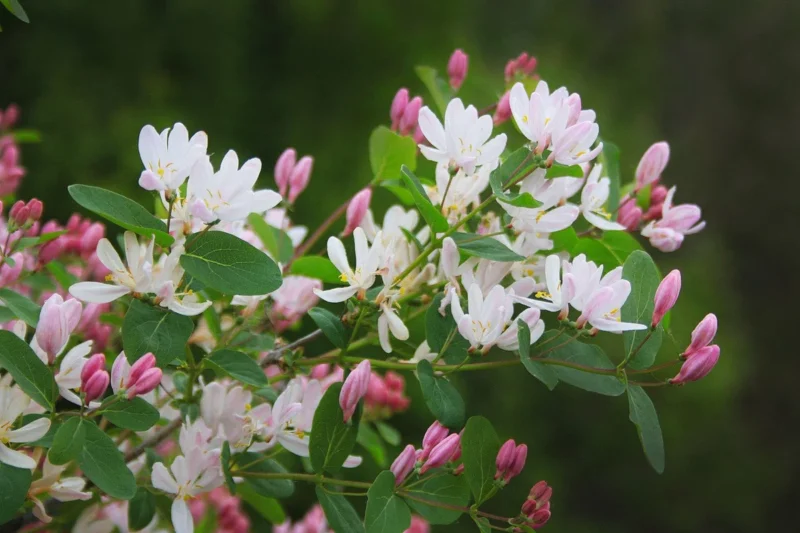
Honeysuckle is another fast-growing climber that produces clusters of fragrant flowers throughout its growing season. It thrives in full sun exposure with moist yet well-drained soil conditions.
Japanese Honeysuckle (Lonicera japonica)
Japanese honeysuckles twine around their support structures as they grow rapidly up to 30ft tall! These beauties bloom from late spring through early autumn, producing sweetly scented yellow-white blossoms which attract hummingbirds and butterflies alike!
Henry’s Honeysuckle (Lonicera henryi)
Henry’s honeysuckles are known for being extremely hardy plants capable of surviving freezing temperatures down to -20°F (-28°C). They produce white blooms during summer months while maintaining attractive foliage year-round!
Climbing Hydrangea (Hydrangea anomala subsp. petiolaris)
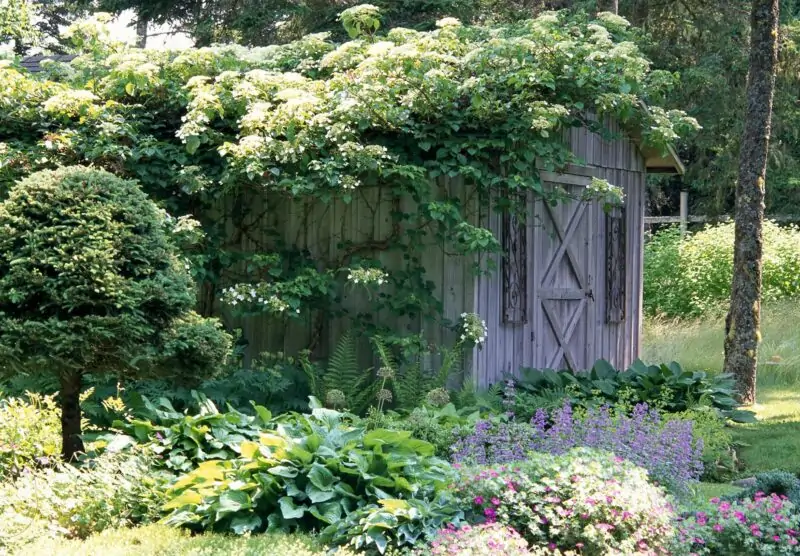
This elegant spreading vine features dark green leaves coupled with delicate lace-cap flower heads, creating a stunning spectacle against masonry or stone surfaces. It’s ideal for partially shaded areas where there is moisture retention within soils like loam types.
Clematis spp.
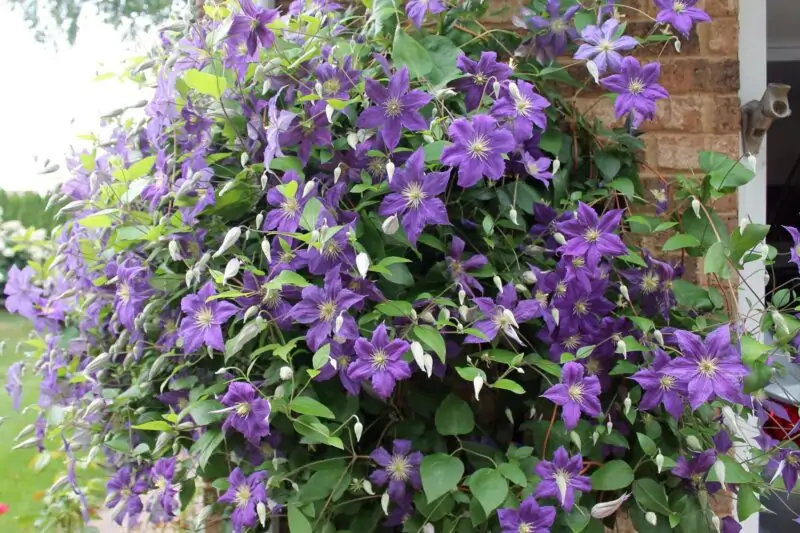
Clematis includes over three hundred species ranging from deciduous to evergreen climbers. Among the most popular are:
Clematis armandii
Clematis armandii is an ideal choice if you’re looking for a fragrant evergreen climber. This stunning plant produces show-stopping white blooms that have a sweet fragrance and appear in early spring.
Winter-flowering Clematis (Clematis cirrhosa)
Winter-flowering clematis erupts with large, scarlet flowers throughout late fall into the winter time period, making it stand out among other plants during this season of the year!
Star Jasmine (Trachelospermum jasminoides)
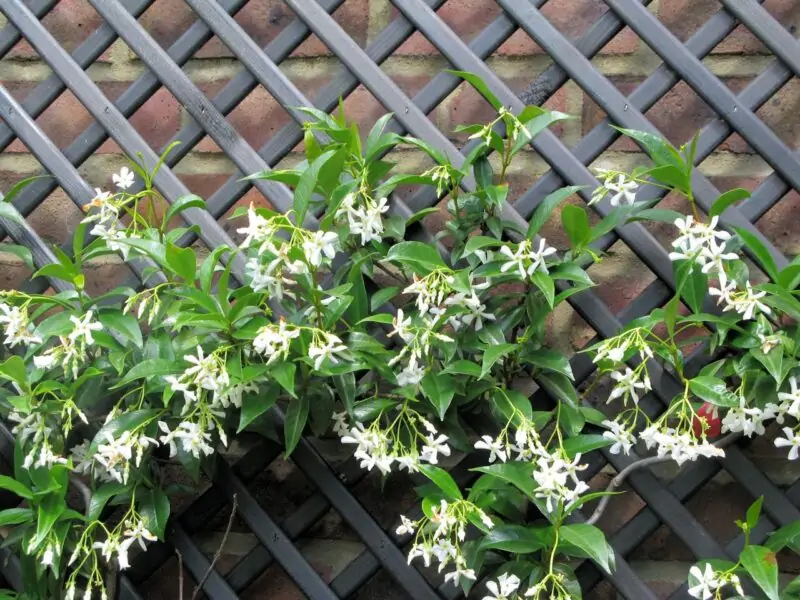
Star jasmine’s gorgeous foliage doesn’t shed even in cold weather conditions; hence it remains green all-year-round without losing its lustrous appearance. It can be found in either semi-evergreen or evergreens varieties, boasting glossy leaves coupled with small white or pink buds producing highly fragrant smells when blooming.
Euonymus (Euonymus fortunei)
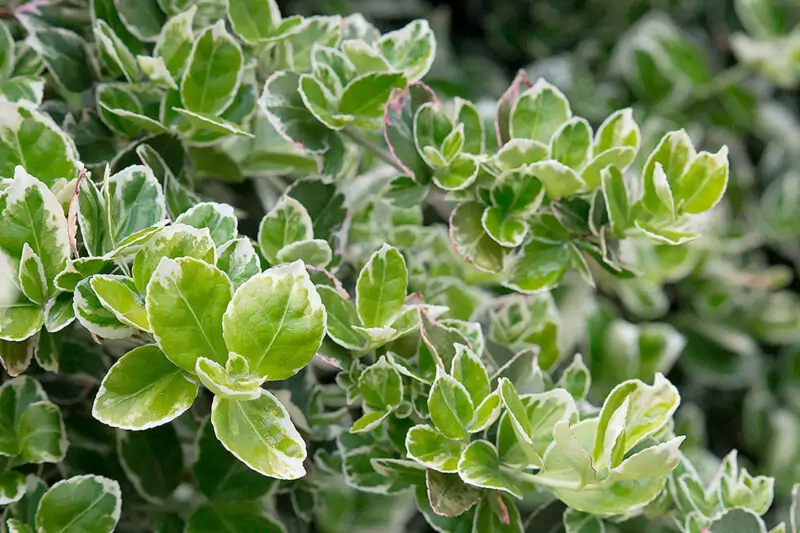
Although not commonly known as climbing plants, Euonymus Fortunei boasts attractive golden variegated green foliage that quickly spreads over walls and fences, adding texture to any exposed surface areas.
Planting and Supporting Evergreen Climbers
Growing climbers can be a great way to bring life and beauty to your garden. They are versatile plants that provide year-round interest, covering fences or walls with foliage, gorgeous blooms, or delicious fruits. However, growing them requires proper planting techniques and support structures to ensure their growth is healthy.
Ideal Planting Time
The best time for planting evergreen climbers depends on the climate in which you live. In general, it’s recommended that you plant during early spring so they have enough time to establish roots before hot weather arrives – typically March through May, depending on your location.
For climates where winters are mild (USDA zones 7-11), fall might also be an ideal time, as the soil remains warm long enough for root systems of newly-planted climbers to get established without being stressed by high temperatures.
If you choose bare-root plants instead of container-grown ones when purchasing new climbing plants, make sure they have been properly stored until ready for shipment. Otherwise, consider soaking them overnight in water before planting, as this will help rehydrate any dried-out roots within hours while improving transplant success rates significantly.
Tips for Planting Climbers
When preparing beds for these vines, several essential steps need consideration:
Soil Preparation
Climbing plants prefer well-draining soils rich in organic matter, such as composted manure. Poor drainage creates unhealthy conditions prone to diseases like root rot, which may lead to plant death unless controlled promptly after being identified. If needed, amend heavy clay soils using sand, perlite, sharp grit, vermiculite, etc., mixed into existing soil layers. If necessary, raising the bed height somewhat above the surrounding terrain level facilitates better air circulation, reducing the incidence of fungal problems caused by wetness around the base of stems and trunks. This can affect overall health and performance, especially over years-long periods, leading to a possible reduction in fruit production and flowering in some plants altogether prematurely.
Hole Depth
Dig holes twice as deep and wide as the plant’s root ball. First, find the right spot according to sun exposure needs, then incorporate soil amendments into the planting hole’s bottom until well mixed with existing dirt. Then, fill the hole a little bit above the surface level to ensure better drainage.
Watering
Watering newly planted climbers is critical during their first growing season so they can establish roots deep enough to thrive on their own later without needing frequent watering. Keep soil moist but not overly wet and avoid waterlogging conditions around the base of plants, which may attract pests like slugs or snails that feed on leaves, leaving unsightly holes behind, damaging vines beyond repair if unchecked over time.
Support Structures
To help evergreen climbers grow successfully, provide them with support structures like trellises, arbors, or pergolas. This ensures that they have a stable surface to climb on and prevents them from becoming tangled or damaged. Choose a support structure that matches the growth habit and size of your chosen climber, and make sure it’s sturdy enough to handle the weight of a mature plant.
Caring for Low Maintenance Evergreen Plants – Climbers
Low maintenance evergreen climbers require minimal care once established properly in suitable locations free from environmental stresses such as drought, excessive heat or cold, high winds, or disease and insect infestations.
Pruning and Training
Annual pruning is essential to keep growth manageable and maintain the health and appearance of your climbing plants. Be sure to remove dead, damaged, or diseased wood, cutting back to healthy green tissues whenever possible. Make clean cuts close to branch junctions, avoiding tearing bark or wounding trunk areas unnecessarily.
Each type of climber has unique pruning needs, so be sure to research the proper care instructions for your specific plant. Nurseries and garden centers can also provide guidance on optimal pruning practices and schedules.
Pest and Disease Control
Proactive pest and disease management is key for maintaining healthy, low-maintenance evergreen climbers. Regular monitoring throughout the year can help you identify issues quickly before they spread and become more difficult to manage. Some common pests that affect climbing plants include aphids, spider mites, mealybugs, scale insects, snails, and slugs. Diseases are often caused by fungi, bacteria, or viruses, which can strike depending on various factors such as seed quality, watering practices, and environmental conditions.
Preventive measures, such as keeping foliage dry, avoiding overhead irrigation, controlling water drainage, providing ventilation around the base of the plant, and removing damaged or diseased wood can help reduce the overall impact of these problems. Regular inspections and prompt removal of infected materials will further contribute to maintaining healthy, disease-resistant plants.
FAQs
No, that’s the beauty of these plants. They are perfect for those who want to enjoy greenery without spending too much time on upkeep.
It depends on the specific plant and its requirements. Some tolerate different types of soil while others prefer a specific type, so it’s best to do some research before selecting your climbing plant.
No, different plants have varying temperature requirements so make sure you choose one that is suited for your region or microclimate.
Conclusion
In conclusion, low maintenance evergreen climbing plants can transform your outdoor space, adding year-round greenery, shade, privacy, and fragrance. By selecting the perfect climber based on your specific needs and conditions, and providing the proper planting techniques and support structures, you can enjoy the beauty and benefits these plants offer with minimal effort.
With the right support structures and minimal care, these plants can transform your outdoor space into a lush, inviting sanctuary. So go ahead, explore the options available, and find the perfect evergreen climber for your garden.